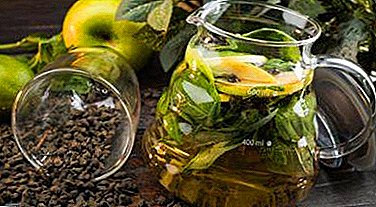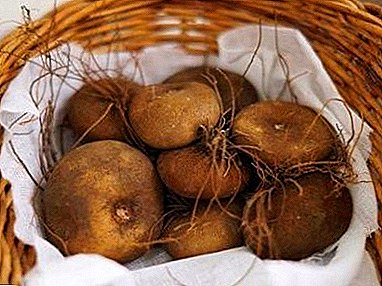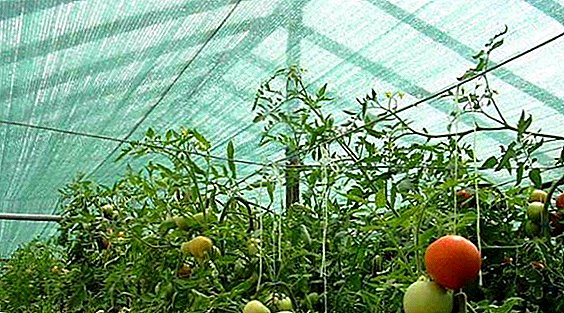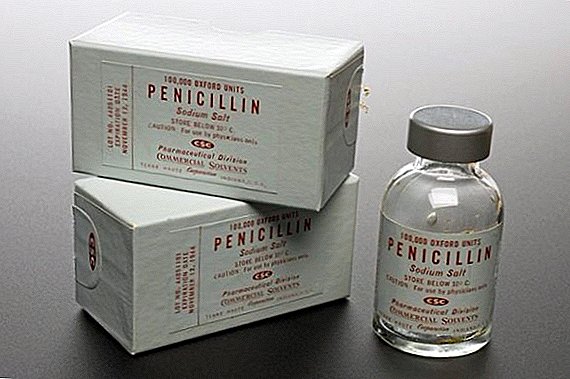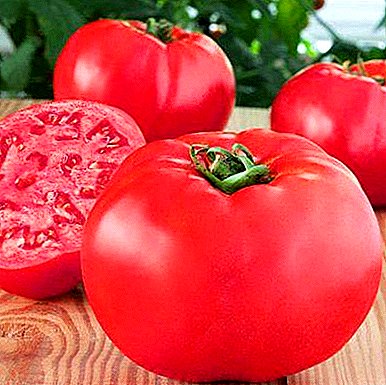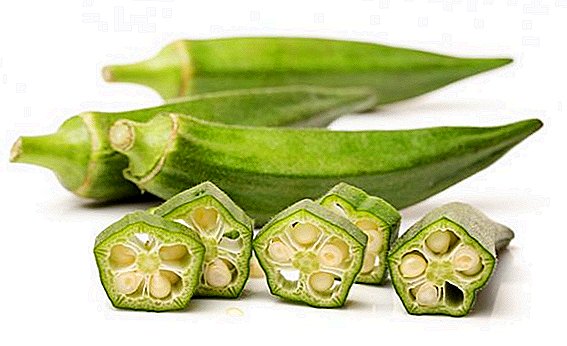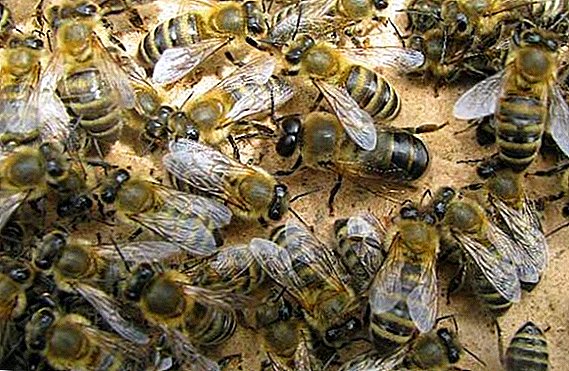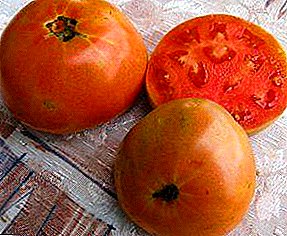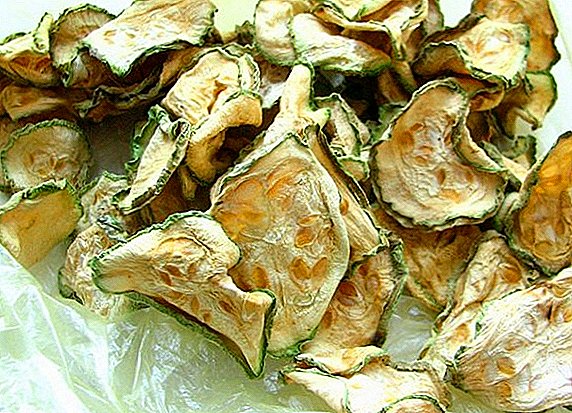 Zucchini is a valuable dietary product with a rich vitamin set and excellent taste. It will be indispensable in your diet, if you prefer healthy and wholesome plant foods. True, plenty of fresh zucchini can be eaten only in the summer season, and in order to enjoy the taste of the vegetable throughout the year, many housewives resort to preparations: canned vegetables and salads, marinades and even zucchini jams. But in this case, the product loses a lot of useful qualities. A worthy alternative to the usual zucchini blanks is vegetable drying. If you do not know what can be done from dried zucchini and how to organize this process correctly, then we can sort out the question.
Zucchini is a valuable dietary product with a rich vitamin set and excellent taste. It will be indispensable in your diet, if you prefer healthy and wholesome plant foods. True, plenty of fresh zucchini can be eaten only in the summer season, and in order to enjoy the taste of the vegetable throughout the year, many housewives resort to preparations: canned vegetables and salads, marinades and even zucchini jams. But in this case, the product loses a lot of useful qualities. A worthy alternative to the usual zucchini blanks is vegetable drying. If you do not know what can be done from dried zucchini and how to organize this process correctly, then we can sort out the question.
Are useful properties retained when dried?
Since ancient times, people have resorted to drying vegetables, fruits, herbs and berries, as this was a vital necessity. Currently, there are many ways to preserve food - freezing, canning, pasteurization and others. But drying of products still remains the most financially advantageous, simple and convenient method, in which the product retains all the original taste and vitamin properties.  In the process of drying vegetables lose up to 4/5 of the amount of moisture, and since the zucchini consists of liquid by 90%, then from 10 kg of fresh fruits you get 1 kg of dried, respectively.
In the process of drying vegetables lose up to 4/5 of the amount of moisture, and since the zucchini consists of liquid by 90%, then from 10 kg of fresh fruits you get 1 kg of dried, respectively.
Did you know? In some cuisines of the world, not only fruits, but also squash flowers are eaten. Their use is multifaceted: bright yellow petals are added to main dishes, snacks and salads, desserts and pastries. Thanks to the same flowers, the fruit was grown in Europe for a long time as an ornamental, not a food plant.
Advantages and features of this method:
- Preservation of all macro and micronutrients, vitamins. During preservation, many beneficial compounds are destroyed, but during drying only moisture is evaporated from vegetables and fruits.
- Efficiency. If you do not have a special electric dryer, you can always use the oven. And if you live in a private house, you will surely find a place to dry the fruits outdoors. At the same time no additional devices are required. And at the end of the process, the dried product will only be collected and properly stored.
- Natural products. When buying ready-made dried fruits, one can never be sure that they did not contain preservatives and chemical agents for treatment against pests. If you cook dried zucchini on your own at home, you can be confident in their quality and organicity.
- No oxidation. The oxidation process requires the presence of water, as it is a universal conveyor for all substances. But if there is no moisture, respectively, the oxidation process does not occur.
- Lack of development of pathogenic microorganisms.
- Absolutely any varieties of zucchini are suitable for drying.
 If you comply with the technology of drying, you can save up to 90% of all nutrients. It should be borne in mind that the most "poorly tolerate" high temperatures are vitamin C (up to 55-60 ° C), vitamins A and B can be maintained at higher rates on a thermometer (up to 75 ° C), but micro- and macroelements can withstand temperatures up to 85-90 ° C.
If you comply with the technology of drying, you can save up to 90% of all nutrients. It should be borne in mind that the most "poorly tolerate" high temperatures are vitamin C (up to 55-60 ° C), vitamins A and B can be maintained at higher rates on a thermometer (up to 75 ° C), but micro- and macroelements can withstand temperatures up to 85-90 ° C.The only drawback of drying products can be considered the loss of the appearance of the fetus. However, this in no way affects the taste, smell and nutritional value!
Learn how to dry the herbs (parsley, dill, green onions, cilantro, spinach, sorrel, thyme), tomatoes, peppers, squash, onions, parsnips, celery, broccoli, mushrooms for the winter.
The benefits and harms of dried zucchini
Since the zucchini preserves almost all substances when dried, the benefits of dried and fresh fruits are almost the same. So, the fruits have following advantages:
- Rich vitamin composition. 100 g of fruit contains vitamins (descending): C, B3, E, B1, B2, B6, as well as beta-carotene, folic, nicotinic and malic acids, antioxidants.
- A storehouse of micro- and macroelements: potassium, phosphorus, magic, calcium, iron, zinc, selenium and manganese are present in smaller quantities.
- Low calorie. From this vegetable is difficult to gain extra pounds, since 100 g contains only 23 Kcal (fresh).
- Not allergenic. Squashes can be consumed even by the smallest - children from 7 months. In exceptional cases, this vegetable can cause allergies in adults.
- Easily assimilable.
- Allowed to use for pregnant and lactating women.
Did you know? According to one legend, zucchini is considered a gift of the gods. At a time when the main food of people was fish, and many sailors went to catch a long time at sea, women asked the gods for food that would grow on the ground. She was supposed to have soft flesh, like a fish, sunny color, like the sun-drenched sea, and strong skin, like a turtle shell. The gods had mercy and gave this fruit to humanity.
 Eating zucchini in fresh and dried form has on the body following effects:
Eating zucchini in fresh and dried form has on the body following effects:
- improves digestion;
- normalizes the nervous system;
- boosts immunity;
- normalizes the work of the heart, blood vessels;
- useful for obesity and overweight;
- suitable for people with diabetes;
- reduces the risk of malignant tumors.
However, in certain diseases, the use of zucchini, even in dried form, can harm the body. Thus, the fruits can not be eaten in diseases of the kidneys, as the fruits contain a lot of potassium. If there are diseases of the stomach and intestines (ulcer, gastritis, etc.), you also need to minimize the amount of fruit in the diet - zucchini can cause irritation of the mucous membrane. In any case, before using fresh or dried zucchini, ask the doctor for advice.
Tips for gardeners: how to choose the best sort of zucchini; how to grow zucchini from seed and seedling method; how to deal with diseases and pests zucchini.
Selection and preparation of zucchini for drying
It is best to choose for drying young small (10-20 cm) fruit with intact skin and a green tail. Compared with large fruits, they have a more tender flesh and a greater amount of nutrients.  What kind of vegetables should be avoided:
What kind of vegetables should be avoided:
- Partially cleaned. So unscrupulous sellers are trying to hide the traces of rot and damage.
- With a shiny, unnatural, bright skinned. This skin indicates the use of nitrates in growing.
- With a dry stalk. This feature also indicates the presence of nitrates in the fruit.
- With a cracked, flaky skin. These symptoms speak of plant disease.
As mentioned above, zucchini of any varieties, types and colors will be suitable for drying. Both early and late-ripening species can be used. If you want to dry large fruits, you will need to remove the seeds.
Process zucchini preparation to different ways of drying is almost the same. It consists of such steps:
- Rinse the vegetables thoroughly, cut the stem and tail.
- If you use very young zucchini, they can be left with the peel. With large fruits it is better to cut off the rough, thick skin.
- From large vegetables need a spoon to remove the seed.
- Next, the fruit should be cut: straws, cubes, rings or half rings. Optimally cut into slices 1-1.5 cm thick.
- The pre-cut vegetable can be immediately dried or boiled for 1-2 minutes and then cooled sharply in cold water. Instead of boiling, some housewives advise to salt the zucchini (for juice separation), then wash off the juice and start drying. In case of short cooking, it will be possible to extract nitrates from vegetables (if they are there), but the amount of useful vitamins will also decrease.
 After the preparatory stage, it is necessary to choose the method of drying fruits.
After the preparatory stage, it is necessary to choose the method of drying fruits.Dried fruits of cherry, plum, grapes, apples, pears, strawberries, currants, cranberries, blueberries, rosehips, hawthorn, cornel, chokeberries - this is a great way to save a piece of summer for the winter.
Popular drying methods
For drying can be used as the oldest methods (in the air), and n with the help of modern technology (ovens, dehydrators). The first method will be somewhat stretched in time, but economical. And in a dehydrator in a short time will be able to dry quite a lot of fruit.
Outdoors
With the natural method of drying, the process can last from several days to three weeks. For drying, you need to select sieves, grates, any flat trays with holes at the bottom. Fruits should be spread out at a short distance from each other and placed under the sun. To achieve uniform drying, 1-2 times a day they must be turned.
Important! It is impossible to choose trays and trays with a solid bottom for drying under the sun - due to the lack of air circulation, the fruit may begin to rot, which will destroy the entire harvest.
It is also extremely important to prevent the billet from contacting flies, midges and other insects. For this drying, you can cover the grid. However, it should not interfere with the sun's rays.  Another option for natural drying is indoor drying. To do this, chopped vegetables are strung on a fishing line, thread or wire and hung in a well-ventilated room without drafts. However, there will have to take care that the workpiece is not attacked by insects and other animals.
Another option for natural drying is indoor drying. To do this, chopped vegetables are strung on a fishing line, thread or wire and hung in a well-ventilated room without drafts. However, there will have to take care that the workpiece is not attacked by insects and other animals.
Read also about how to dry walnuts, pumpkin seeds, as well as lemons and oranges for home decoration.
In the oven
With this method, dry zucchini will work for 6-8 hours. For drying, you can use a baking sheet and baking paper. Put the sliced fruit on paper with space between them, heat the oven to 50-55 ° C and send a baking tray there. The door can be left barely open for ventilation.
It is necessary to systematically turn the chopped vegetables and change them to change their location at the back of the oven and at the entrance. If after this time you got a baking sheet and found that the dried zucchini is not ready yet, you can send them to the oven again for 1-2 hours. 
In the electric dryer
This method is similar to the previous one, but shorter in time and more convenient. Although its use will have to spend money on an electric dryer - this device is not in every home.
Today models of electric dryers (dehydrators) differ in the following indicators:
- power;
- the number and location of trays (horizontal / vertical);
- shape (round, square and rectangular);
- placement of the heating element and ventilation (on the front wall / bottom / top). In some models in which ventilation and heating are provided evenly, you don’t need to think about turning up the drying at all;
- on noise effects (newer and more expensive models work almost silently).
 In general, the process of drying zucchini in the dryer is extremely simple: the washed and sliced fruits are laid out on the baking trays, set the required temperature mode and send the trays inside. After 4-5 hours, the finished product must be removed from the dehydrator. Drying zucchini in an electric dryer is the most modern and rational method of drying, because by choosing a suitable dryer model, you can dry a large number of fruits in a short time, while your participation in the drying process will be minimal.
In general, the process of drying zucchini in the dryer is extremely simple: the washed and sliced fruits are laid out on the baking trays, set the required temperature mode and send the trays inside. After 4-5 hours, the finished product must be removed from the dehydrator. Drying zucchini in an electric dryer is the most modern and rational method of drying, because by choosing a suitable dryer model, you can dry a large number of fruits in a short time, while your participation in the drying process will be minimal.Important! Each model of the dehydrator is arranged and works in its own way, therefore, before using the device, it is necessary to study the instructions and understand how it is better for your model to dry certain fruits.
How to check readiness
The duration of the process will depend not only on the method of drying and on the characteristics of the device (oven or dehydrator), but also on the fruits themselves. So, the duration varies depending on:
- the amount of sugar in the fruit;
- initial water content;
- the way of cutting and the size of the pieces;
- ventilation quality;
- air temperature on the street or set temperature;
- air humidity;
- features and characteristics of the device (if you use an artificial method).
 In any case, it is necessary to determine the readiness of fruits by their external characteristics: they must be elastic, but not excrete moisture. The surface may darken slightly and wrinkle. At the same time, dried fruits should not resemble dried ones - in this case they need to be dried. It is also important to try the readiness of the cooled product, since in a warm state one can easily make mistakes.
In any case, it is necessary to determine the readiness of fruits by their external characteristics: they must be elastic, but not excrete moisture. The surface may darken slightly and wrinkle. At the same time, dried fruits should not resemble dried ones - in this case they need to be dried. It is also important to try the readiness of the cooled product, since in a warm state one can easily make mistakes.Did you know? The largest and weighty zucchini was grown in England in 2008. The weight of this handsome man reached 65 kg. For such a huge size and weight of a vegetable hit the pages of the Guinness Book of Records.
How to store dried zucchini
It is best to use glass jars with a sealed metal or plastic lid for storing finished products — in such containers, the mole, larvae, and other pests are not exactly scary.  Sometimes you can find recommendations for storing drying in cotton bags, previously soaked in salt solution. Also, the drying itself can be mixed with a small amount of salt. However, even in this case, a mole may be produced in products. In any case, the container should be left at room temperature in a dark place.
Sometimes you can find recommendations for storing drying in cotton bags, previously soaked in salt solution. Also, the drying itself can be mixed with a small amount of salt. However, even in this case, a mole may be produced in products. In any case, the container should be left at room temperature in a dark place.
Another way to store dried zucchini is the freezer. This method is especially relevant if you are a little nedosushili fruit.
Do not store drying in iron, plastic containers, plastic bags - due to the lack of sealing, zucchini will absorb moisture from the air and become soft, and may also be affected by pests. If you have correctly prepared, dried and stored drying, it will stand until the next season and even longer.
What can be prepared from dried zucchini
There are many recipes that apply dried zucchini for the winter. They will be a sought-after ingredient in vegetable stews, entrees, vegetable sauces and casseroles. From dried fruits you can cook porridge, using this vegetable as the main ingredient, fry and make scrambled eggs, warm salads.  For gourmets and tasteful taste lovers it will be interesting to make a cake of dried fruits with the addition of greens, garlic and mayonnaise. Zucchini goes well with mushrooms, onions and garlic, spices, herbs.
For gourmets and tasteful taste lovers it will be interesting to make a cake of dried fruits with the addition of greens, garlic and mayonnaise. Zucchini goes well with mushrooms, onions and garlic, spices, herbs.
Dried fruit can be added to the dish immediately removed from the jar. To return the vegetable to its former elastic form, you can put zucchini in warm water at the rate of 2: 1. But if you add dry zucchini in a hot dish, they will find in it their former forms on their own.
If you still have not decided to prepare zucchini for the winter for drying by dropping all doubts! Ease of preparation, the benefits and versatility of the use of the dried product are the main advantages for which the hostess loved dried zucchini.



